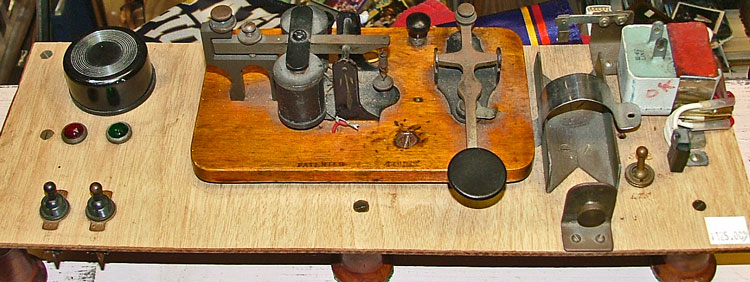FIRST – the SEMAPHORE
Developed in the early 1790s, the semaphore consisted of a series of hilltop stations that each had large movable arms to signal letters and numbers and two telescopes with which to see the other stations. Like ancient smoke signals, the semaphore was susceptible to weather and other factors that hindered visibility. A different method of transmitting information was needed to make regular and reliable long-distance communication workable.
from History.com
Here is a U.S. Navy training video for using flags to signal:
Can you imagine communicating hilltop to hilltop?
It’s hard for us to picture such a life today, especially when having our phones unavailable for 15 minutes has us acting like we’re lost! Enter the telegraph machine – the beginning of the more reliable and more easily accessible communications.
In 1843, Morse and Vail received funding from the U.S. Congress to set up and test their telegraph system between Washington, D.C., and Baltimore, Maryland. On May 24, 1844, Morse sent Vail the historic first message: “What hath God wrought!” The telegraph system subsequently spread across America and the world, aided by further innovations.
…
The electric telegraph transformed how wars were fought and won and how journalists and newspapers conducted business. Rather than taking weeks to be delivered by horse-and-carriage mail carts, pieces of news could be exchanged between telegraph stations almost instantly. The telegraph also had a profound economic effect, allowing money to be “wired” across great distances.
…
Did you know? SOS, the internationally recognized distress signal, does not stand for any particular words. Instead, the letters were chosen because they are easy to transmit in Morse code: “S” is three dots, and “O” is three dashes.
from History.com
From this invention, communication changed rapidly moving on to the telephone, fax machine, and now the internet.
Here’s an intriguing explanation of using the Morse Code on a telegraph machine. The descriptive images are as interesting as the lesson! Enjoy!
Stop in and see this fascinating piece of our recent history. We’ll be watchin’ for ya!




